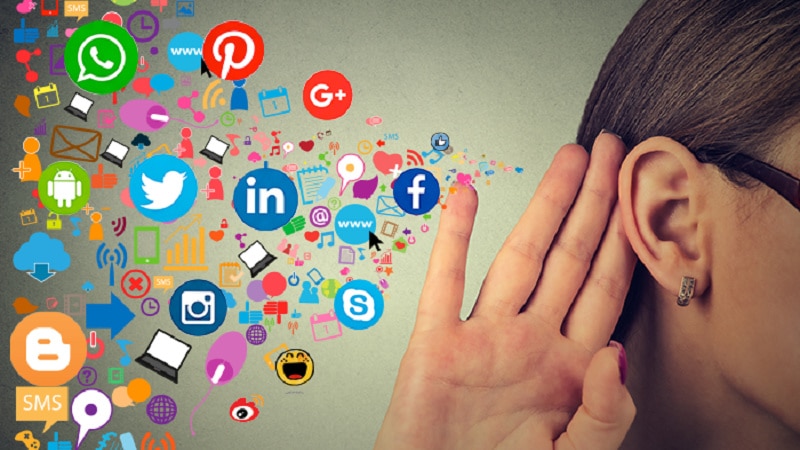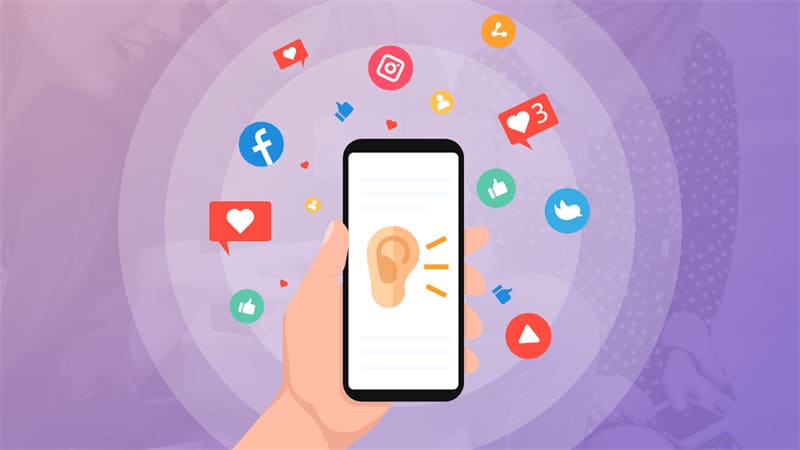
People feel more comfortable talking to others on social media than in face-to-face conversations. This may be why communications via platforms like Twitter and Facebook tend to reveal more about people’s preferences and behaviour than personal talks.
That said, the range of topics explored during these virtual discussions can be a source of valuable information that businesses can use to know their target market better.
As a company vying for consumer attention in a competitive market, you must understand your target customers to appeal to them. This is why social listening – or social media listening – is important for business growth.
Whether you hire a social media agency in Dubai or do it yourself, this article will teach you what social listening is and how it is done properly.
What Is Social Listening? How Does It Work?

Social media listening means gathering and analysing content that users publish on social media platforms. This is usually done by focusing on a specific topic or brand.
Also referred to as social media monitoring, this process gathers information from all virtual conversations on a particular topic. These are then analysed to provide insights into potential opportunities for a business to act.
Most social listening tools collect and collate data from various social sources, such as:
- YouTube
Some also incorporate what users talk about in discussion forums, blogs, consumer reviews platforms, and podcasts (thanks to AI voice recognition).
Basically, social media listening involves two key steps:
1. Mention monitoring
This entails keeping track of all mentions of your brand, products, and keywords related to your business.
During this step, you should also consider what people say about your competitors to look for opportunities to get ahead in the market.
2. Data analysis
After data gathering, you need to analyse the information to determine how to use it to your advantage.
Actions from your analysis don’t have to be as big as redirecting your brand positioning. Even the simple act of responding to a happy customer can provide a significant impact on your business, especially if it is supported by social data.
Social Listening vs Social Monitoring
If you were paying attention to the previous section, you probably already know how social listening and social monitoring differ.
Although they seem the same, social monitoring is just one step in the social listening process. It focuses on collecting data, which is perfect for A/B testing campaigns and monitoring return on investment (ROI).
Of course, the numbers are just that – numbers. They won’t paint the clearest picture unless you look into the details.
Take, for example, a post that garnered many reactions on Facebook.
While it may seem good to have these numbers reaching thousands, you still need to look at the type of reactions the post is getting to determine whether it’s actually getting positive responses. After all, lots of angry reactions may not be a good thing.
Of course, that’s not necessarily a bad thing, either. It will still depend on the type of post and what reactions you want to get from sharing it.
So, the main difference between social listening and social monitoring is the number of facets they consider. While the latter focuses on data separately, social media listening brings all the data together to give you a clearer picture.
Social Media Listening: What You Need to Do It Properly

Plenty of tips online can guide you on how to succeed in social listening. However, you need to answer some questions first to do it properly:
1. Your Goals
What do you intend to measure?
This question will ask about your specific goals when performing social listening. The answer can vary from one company to the next, but some of the typical ones include:
- Crisis management
- Brand health and reputation
- Campaign performance tracking
- Demographic and tend insights
- Content creation
- Image recognition
- Customer service
- Agency pitch research
2. Type of Data
What data should you gather?
You will then need to determine what type of information you need to gather to achieve the goals you set.
This can be more than one type. Create a checklist and set the parameters with your marketing department.
One example is looking for brand mentions around a specific topic, like a potential new product, service, or feature.
3. Amount of Data
How much information should you gather? Or rather, how long will your social listening campaign last?
Not all projects need the same amount of social data. Matters like brand reputation and customer service require continuous social monitoring, while others, such as limited-time campaigns, may only need data for a specified period.
The key to maximising social media listening is knowing whether you’ve collected enough data to gain valuable insights into what you intend to achieve.
Keep Calm and Listen
An effective social media marketing campaign isn’t always about you feeding your audience information or promoting your products and services. It also requires listening to what your target market actually needs and tailoring your responses accordingly.










